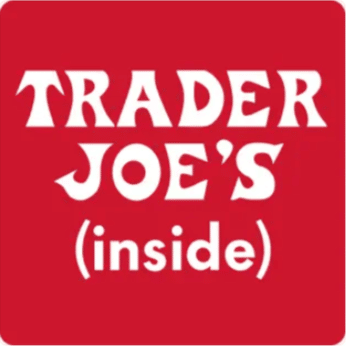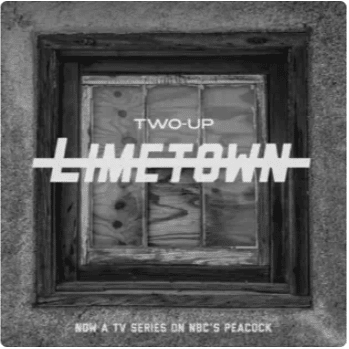If writing isn’t your forte, good news: Content marketing isn’t limited to written formats.
Any type of content that your audience can consume, learn from, and enjoy is fair game. And that includes podcasts.
Podcasting is a popular and fast-growing medium – 79% of Americans aged 12 and up are familiar with podcasting, and 62% have listened to a podcast at least once.
Podcasts exist for every topic under the sun: movies, music, fashion, beauty, news, culture, gaming, true crime, cooking, mental health, books, marketing, the environment, fiction, self-help, education, finance, comedy – and more.
No matter your industry or expertise, you can create a podcast about it.
And there’s a lot of room for newcomers: Only about 4 million podcasts exist. Compare that to the number of blogs – nearly 600 million – and you’ll see that the competition is far less stiff.
In other words, creating a podcast is a smart move for brands looking to differentiate and build trust and authority with their audiences.
Let’s dive deeper into this great content type, including how to start a podcast.
What is a podcast?
Chances are, if you’re reading this, you’ve listened to at least one podcast in the past year but want to know more about them.
To define it as simply as possible, a podcast is an audio program focused on a specific topic and split into multiple episodes. Podcasts are pre-recorded, so listeners can download or stream episodes at any time through their preferred podcast channel, like Apple Podcasts, Stitcher, or Spotify.
Additionally, most podcasts feature people talking – whether they’re people telling stories, experts sharing knowledge, or a host interviewing interesting guests.
Some podcasts are nothing more than two people having a conversation in every episode. Some feature one person talking directly to the listener. There are even scripted podcasts with a continuing story like a TV show – but only dialogue and sound effects convey the fictional plot.
Whatever the format, podcasts are an audio experience that connects creators directly with listeners’ ears.
Why start a podcast?
Anyone can create a podcast – anyone.
Whether your brand is tiny or sprawling, the start-up costs are low and the equipment needed is minimal.
Plus, the continued and growing popularity of podcasts means that you’ll most likely have an audience out there who will be interested in what you produce.
For example, 50% of Americans ages 12-34 listen to podcasts monthly, and 43% of 35-54-year-olds.
All that said, don’t forget the most important reason to start a podcast: a more intimate connection with your audience.
Podcast content allows you to speak directly to them and prove your expertise in a much more direct way.
Generally, podcast listeners give more time and attention to a podcast than a written article. You may have their undivided attention for 30 minutes, a stark contrast to the 90 seconds they might spend scanning a blog post.
This makes podcasts more intimate than written content and may build trust and brand awareness faster. Plus, a podcast is a fantastic demonstration of E-E-A-T, which adds to your credibility in both the eyes of searchers and search engines.
Lastly, if you publish your podcast episodes on your website with helpful show notes or transcriptions, those episodes can rank in search engines for queries your audience is searching for.
Bottom line: Podcasts are great for your brand and great for SEO.
Get the daily newsletter search marketers rely on.
7 best practices for starting a podcast
Interested in starting a podcast? Start here.
1. Start small, then invest
The second after you decide to start a podcast, don’t run out and immediately buy expensive equipment.
Instead, start small. Use your smartphone and an inexpensive microphone to record your first episodes. Test how your podcast is received and determine whether you can grow it.
If the answer is yes, you can slowly invest in better recording equipment (like a smart microphone that can hone in on your voice and filter out background noise, a headset, and audio editing software), creative help (like a sound mixer or editor), and fancy graphics for cover art.
2. Choose a topic and format
One of the first tasks for creating a podcast is to choose a topic and format.
- Topic: What will your podcast be about? What will you cover?
- Format: How will your podcast be presented? One host? Two or three? Will you tell stories? Do interviews? Share knowledge?
The best way to uncover your main topic and format? Research.
Audience research
What do they want to hear from you? What are they interested in?
What problems or pain points do they have that you could address in your podcast?
Topic research
Find a broad overarching topic that ties into your expertise and overlaps with your business.
If you publish other content, like blogs, consider choosing the same topic area for your podcast. This gives your podcast cohesion and ties it to your other content.
You can even repurpose blog content for podcast episodes, and vice versa, if they’re thematically and topically linked.
Competitor research
Do your competitors have podcasts? What podcasts exist out there on your topic?
Look at what the competition is doing, how they format episodes, and what information they share. How can you differentiate?
3. Outline or script episodes
Before you jump into recording, you need a rough idea of what you’ll cover in each episode and how you’ll do it.
Start by brainstorming topics for at least your first 10 episodes. This will give you an idea of the mileage you’ll get out of your podcast topic/theme and help you keep each episode cohesive and relevant.
(If you struggle to come up with podcast episode topics after the first 10, that might be a sign that you need to broaden your theme or tweak it.)
Then, after your first few episode topics are set, you can write a brief outline of talking points for episode one. You don’t have to script every word you say (unless that helps you!), but you should give yourself a roadmap so you don’t get lost while recording.
Remember, each episode should have a main topic and a goal attached. You need to give listeners a reason to stay with you. Just talking randomly for 20 minutes won’t provide any value.
4. Push through initial discomfort – just press record
With your first episode outlined or scripted, you can press record.
If you’ve never podcasted before, you may have a few false starts before you get into a groove. It may feel strange or unnatural.
The best thing to do is push through and just get your recording done. Over time, you’ll get more comfortable. Don’t give up just because things didn’t go perfectly the first time you tried. You will get better at this the more you do it!
5. Include an intro and outro
Almost all professional-sounding podcasts include a short introduction, where listeners may hear a snippet of music and the host welcoming them to the podcast and introducing the episode topic.
Then, to give listeners a satisfying sense of completion, include an outro (a.k.a., conclusion) that mirrors the intro but instead signs off and sets up expectations for the next episode.
These two bookends help your podcast sound more polished and organized, which listeners enjoy.
6. Optimize
Optimizing your podcast gives it the best chance of being found by listeners. There are a few key areas to focus on for optimization:
- Podcast title: Keep it short, sweet, and relevant to your brand and chosen theme.
- Podcast category: Choose the category that best fits the content of your podcast.
- Podcast description: This description is what potential listeners will read to discover what your podcast is about and whether they want to listen. Keep this user-focused and make sure to include relevant keywords.
- Podcast cover art: Keep it simple, clear, and eye-catching. Don’t try to cram too much text on your cover art. If you can, invest in a graphic designer to create this for you. If you don’t have the means for that right now, try using templates on Canva.
7. Choose a podcast hosting platform
Finally, when it’s time to submit your podcast to platforms like Spotify or Apple Podcasts, know that you need to have a separate host for your audio files first.
Your podcast hosting service stores your podcast episodes and generates an RSS feed, which is what you’ll submit to podcast platforms.
You’ll only have to do this once, as the RSS feed should update automatically when you upload new episodes to your host service.
Hosting services to check out include Podbean, Buzzsprout, or Transistor.
5 great podcast examples
Now that you understand the basic steps to starting a podcast, it’s time to get some inspiration.
Here are some excellent examples of brands, creatives, journalists, and businesspeople doing this medium justice.
Branded podcast: Inside Trader Joe’s

Trader Joe’s is a grocery chain known for its unique products and seasonal items.
On its podcast, hosts go inside stores and behind the scenes to give you the scoop on cult products and how the company works.
Advice podcast: Not Another Anxiety Show

Host Kelli Walker is a registered nurse, certified health and wellness coach, and former agoraphobe.
This anxiety-focused podcast offers guidance, tips, and resources for working through the disorder from Kelli and a myriad of experts.
Fictional podcast: Limetown

This fictional podcast tells the story of the strange disappearance of over 300 people from a small Tennessee town.
It plays out like you’re listening to a real investigative podcast, which makes it even more immersive. This podcast was so popular it was turned into a TV show.
Finance podcast: Money Girl

The Money Girl podcast is hosted by a personal finance and business expert, Laura D. Adams, who breaks down complex financial and small business topics for listeners, making them fun and easy.
Investigative podcast: In the Dark

This award-winning podcast features in-depth investigative journalism on true crime stories gone awry. Each season focuses on one case and dives into every detail. As it happens, the second season was instrumental in helping free a man from prison.
Note: True crime podcasts have exploded in popularity since “Serial” was released in 2014. The best of them are great examples of storytelling and are worth a glance for inspiration.
Ready to start your podcast?
If by now you’re excited to start your podcast, that’s a great sign.
The best thing you can do is dive in with enthusiasm because that passion will show up in your end product.
Any person, brand, or creator can start a podcast.
Just remember to start small, research and plan your topic based on what your audience would love to hear, roughly outline what you’ll say in each episode, and take the time to optimize.
Happy podcasting!
Opinions expressed in this article are those of the guest author and not necessarily Search Engine Land. Staff authors are listed here.
